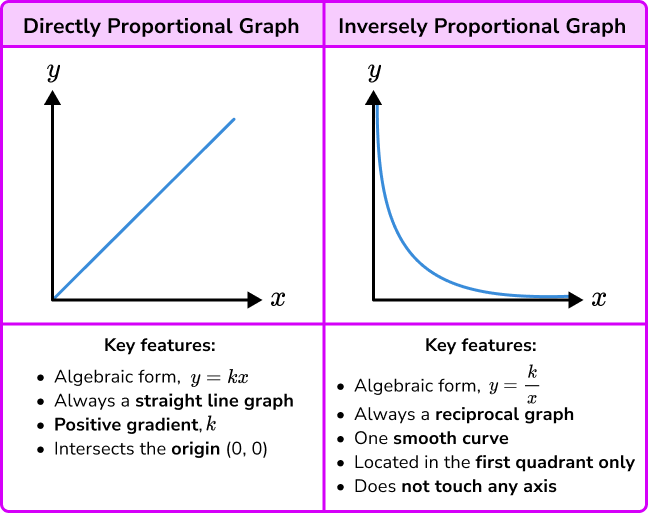
Chapter 14: Mathematics for Physics
Following are the basic things you should know before staring with physics:
Adding, subtracting, multiplying and dividing
understand the links between division and fractions.
Using fractions and decimals
you should be able to write fractions using decimals.
Using percentages
understand that percentages are fractions of hundred.
Using ratios
know that ratios are another way of expressing fractions.
Working out reciprocals
1/number is called reciprocal of a number.
you may have to work out reciprocals when preparing readings for a graph.
Drawing and interpreting graphs and charts
graphs are way of presenting sets of scientific data so that trends or laws can be more easily seen.
also be able to read off new values from a graph line.
finding values between existing points is called interpolation.
extending a graph line to estimate new values beyond the measured points is called extrapolation.
Understanding concepts of direct and inverse proportions.
in direct proportion if one quantity is increased or decreased then the other quantity increases or decreases, respectively.
in inverse proportion if one quantity increases then other quantity decreases and vice-versa.
below is the example, how these graph are made:

Understanding indices.
Understanding numbers in standard notation.
Using a calculator.
Working out an average.
Making approximate and estimations
you should be able to check whether a result is reasonable by doing a rough estimation without calculator.
Understanding units
when giving a result, you must always include the unit.
Understanding number and accuracy
Manipulating equations.
Understanding the terms for shapes, lines and angles.
Using the links between length, area and volume.
Using mathematical instruments.
Knowing the points of compass
directions of north, south, east and west are directions of compass.
Following are the basic things you should know before staring with physics:
Adding, subtracting, multiplying and dividing
understand the links between division and fractions.
Using fractions and decimals
you should be able to write fractions using decimals.
Using percentages
understand that percentages are fractions of hundred.
Using ratios
know that ratios are another way of expressing fractions.
Working out reciprocals
1/number is called reciprocal of a number.
you may have to work out reciprocals when preparing readings for a graph.
Drawing and interpreting graphs and charts
graphs are way of presenting sets of scientific data so that trends or laws can be more easily seen.
also be able to read off new values from a graph line.
finding values between existing points is called interpolation.
extending a graph line to estimate new values beyond the measured points is called extrapolation.
Understanding concepts of direct and inverse proportions.
in direct proportion if one quantity is increased or decreased then the other quantity increases or decreases, respectively.
in inverse proportion if one quantity increases then other quantity decreases and vice-versa.
below is the example, how these graph are made:

Understanding indices.
Understanding numbers in standard notation.
Using a calculator.
Working out an average.
Making approximate and estimations
you should be able to check whether a result is reasonable by doing a rough estimation without calculator.
Understanding units
when giving a result, you must always include the unit.
Understanding number and accuracy
Manipulating equations.
Understanding the terms for shapes, lines and angles.
Using the links between length, area and volume.
Using mathematical instruments.
Knowing the points of compass
directions of north, south, east and west are directions of compass.